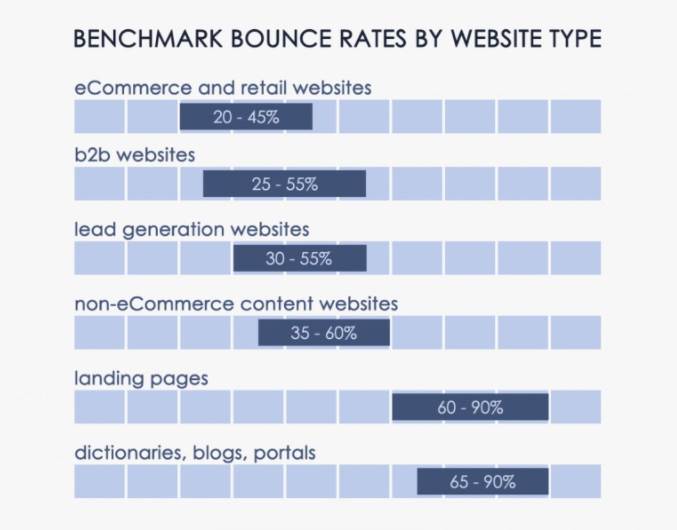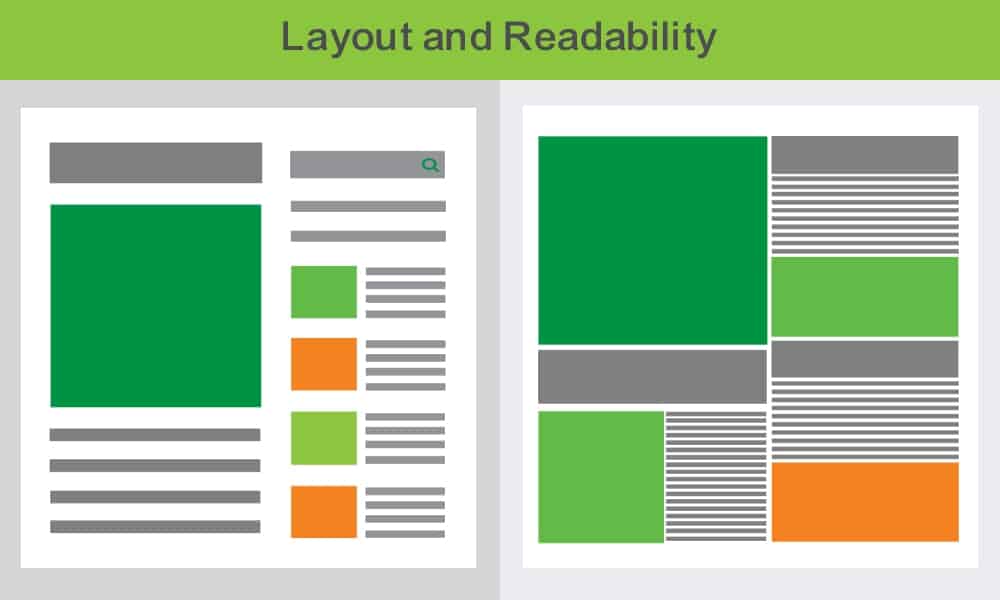Today let’s take a look at bounce rates. What bounces are, what a good bounce rate is, and how to improve your bounce rate if it’s not so good.
What is bounce rate?
A bounce visit is one when somebody comes to your site, then clicks away without interacting in any way. (Or at least, in any way measured by Google Analytics or whatever other software you use.)
Since the visitor didn’t do anything, this is not usually considered great quality traffic.
The bounce rate is the percentage of the traffic that bounces. Essentially, it measures the quality of traffic to your site.
You can measure bounce rate for your site overall, or for individual pages.
The overall bounce rate is shown as a percentage in the main Google Analytics overview report. For the report by page, you need to dig into the ‘Behavior’ section. Here’s a sample report with the navigation highlighted on the left side. (Note that it’s not worth worrying about bounce rate for pages with very little traffic. The numbers can vary widely, and they’re not important pages for your site anyway. So focus on the pages with the most traffic.)
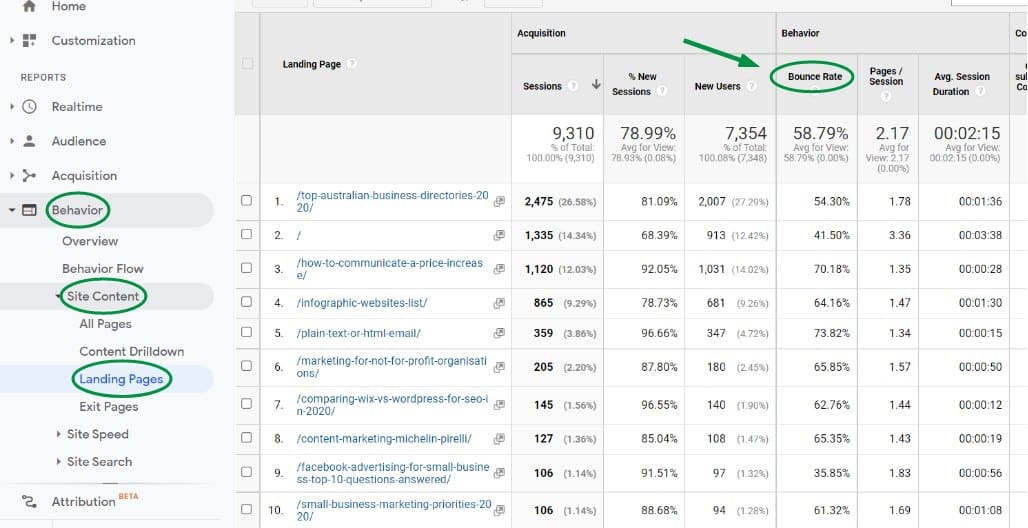
What is a good bounce rate?
There are many website posts which say a good bounce rate is 40 to 60 percent.
But that’s an overall average. Sites vary widely and an overall average isn’t always helpful.
Instead, check out this absolutely fabulous post from CXL, which looks at bounce rates for different kinds of site, different industries, different devices and so on. This will give you some far more useful comparisons to assess your site performance.
Here’s one of their charts, showing benchmark bounce rates by type of website.
You can see how this is more helpful than a simple 40-60% overall average. If you run an e-commerce site with a bounce rate of 55%, it’s time to worry. If you run a blog site with a bounce rate of 55%, you’re doing OK.
Let’s take another look at that example page by page report from our site.
- You can see that the average bounce rate overall is 58.79%. That’s a bit above average for a B2B website, even though NoBull Marketing is a B2B (business to business) site.
- But most of the pages listed are actually blog posts. In that context, those bounce rates of 60-75% don’t look too bad.
- And the home page bounce rate, at 41.5%, is right in the middle of the B2B benchmark.
So while there’s room for improvement, the performance is not too bad.
But what if you look at your site and find your bounce rate is way too high?
Do you really need to improve your bounce rate?
Before you put a lot of effort into improving your bounce rate, do a couple of sanity checks.
- Make sure your Google Analytics is set up correctly. You need to have the code on every single page.
- Understand that sometimes, even if you do everything right, you won’t be able to achieve a ‘good’ bounce rate.
Let’s unpack that second point a bit.
Scenario 1: Imagine you are a local electrician in Northwest Sydney. You have a blog covering common electrical problems. Your traffic comes from all over Australia. Is there anything you can do to change the bounce rate?
Probably not.
People visit your site looking to solve an electrical issue. But if they’re in Melbourne and you’re in Sydney, they’re not likely to contact you or become a client. If your location is shown in your header or footer, they may well bounce off the site. Which is probably a good thing for them and for you. There’s no point in trying to keep them onsite longer just to improve the bounce rate. They still won’t convert to clients.
Scenario 2: Perhaps you have ‘how to’ content which resolves everything for a visitor straight away. That could be a recipe or a weather forecast, or your opening hours. Visitors find what they need and leave without exploring further.
You’ve given a good experience, but it’s complete in itself. So you will get a high bounce rate, but there’s not a problem. (Sites like this often make money from sources like advertising, rather than trying to obtain enquiries and clients.)
If none of the above applies to you, it’s time to tackle that bounce rate!
How to improve your bounce rate
If visitors are bouncing off your site far too much, the problem is usually either technical issues or content issues. For some unlucky people, it’s both!
Technical Challenges
Let’s start with technical challenges. These mostly apply across the entire site. So a high bounce rate across your site is a reason to look into them first. (Unless it’s obvious your content is poor!)
1. Site speed
People don’t hang around waiting for slow sites. The chart shows how every second counts!
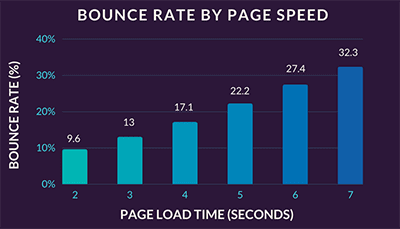
Test your site speed at webpagetest.org or tools.pingdom.com
Remember when testing:
- Set the location of the server to somewhere near your target market.
- Try clearing all caches before you start. This will give you the worst possible experience.
You want a site load speed of two to three seconds, no more.
2. Issues on mobile
Sites often perform differently on mobile. And people are even less patient with slow sites when they’re using mobile data!
You can go into Google Analytics and check your bounce rate by device. If you have a higher bounce rate on mobile, it’s often a sign that there’s something wrong with your mobile responsiveness.
3. Missing pages (404 errors)
Think about the dreaded 404 page. There’s a link to a page on your site, but that page just isn’t there any more. No surprise that people just bounce away when they get to a ‘page not found’ screen. You can tweak your 404 page all you like, and there are some great examples out there. But isn’t it better to fix the problem so people don’t get to your 404 page in the first place?
If you use WordPress, there are plugins to help you find out which urls are generating 404 results on your site. (We use Redirection.) If not, you can create reports in Google Analytics to do this – this article explains how.
4. External links not well set up
This is simple but not always obvious. You probably have links to other sites within your content. What happens when someone clicks on one of those links?
Ideally, you want the link to open in a new tab. So visitors who click can explore the link, but your site is still open in its original window for them to come back to afterwards. That way you haven’t lost the visitor.
This doesn’t happen by default. (If it did, your browser would be full of tabs and crash!) So you need to set it up every time you add an external link. If you use WordPress, there’s a little checkbox on the link settings:
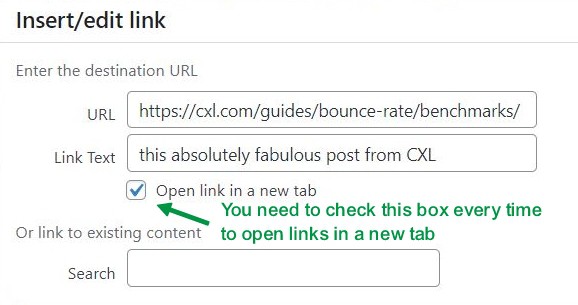
If you’re adding links via html, you just need to add target=”_blank” after the target url. For example:
<a href=”https://nobullmarketing.com.au ” target=”_blank”>NoBull Marketing Home Page</a>
5. Few or unclear internal links
For some pages on your site – the contact page, service pages, resource downloads etc – you want people to fill in a form or place an order. For other pages, you generally want them to go to another page on your site – possibly one which has a form or order! To move from page to page, visitors need links, and they need them to be visible!
Text links are easy to set up, but they’re not always visible.
Start by making sure they are a different colour and that they are underlined. Underlined text is a worldwide norm for links – use it to your advantage.
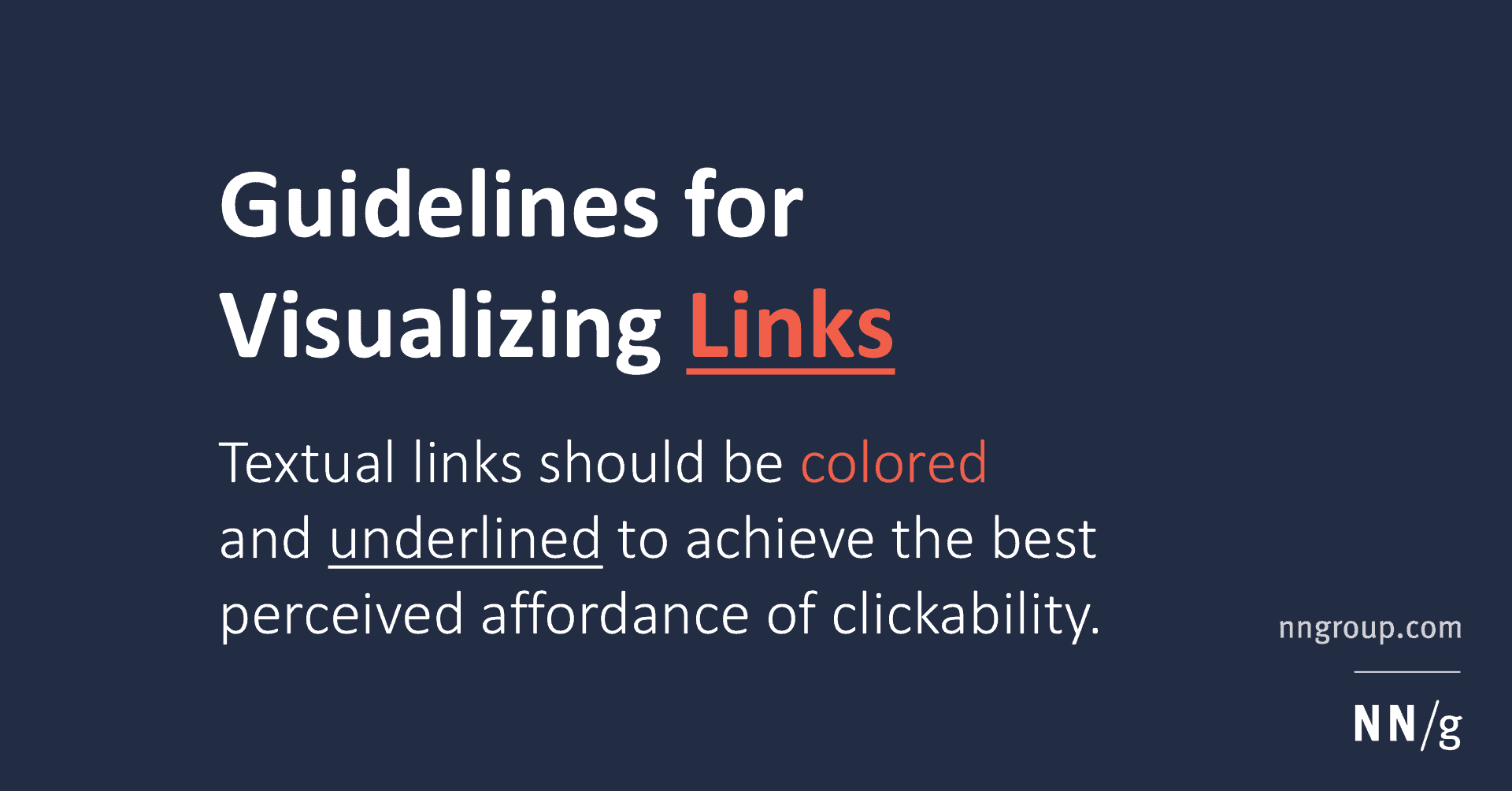
Also consider other formats for links to make them more visible. Buttons or oversize text or even images with an invitation to click.
Summary
So those are the top technical issues which can have people running from your site. Most of them are probably no surprise, but the issue with external links is one I see very often.
You’ve spent a lot of time and effort trying to get traffic to your site – it’s a shame to waste that by having everyone leave straight away.
So start by fixing these technical issues, and then look again. If traffic is still bouncing far too much, it’s time to review your content. That’s the subject of our next blog post.


